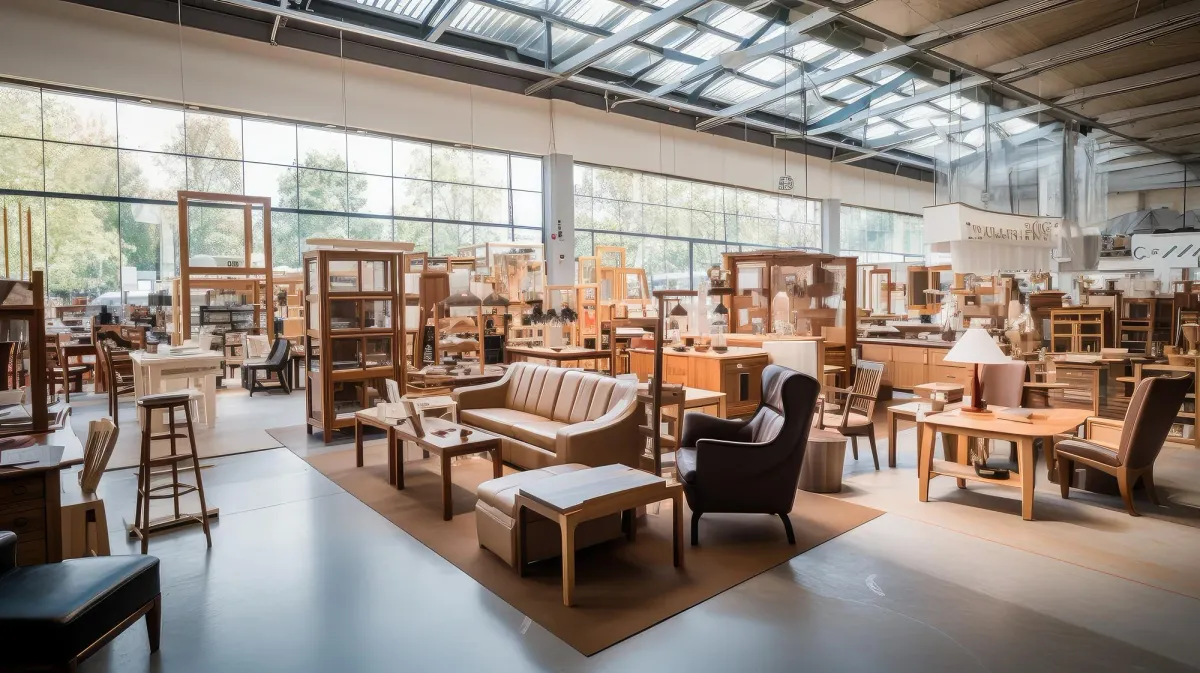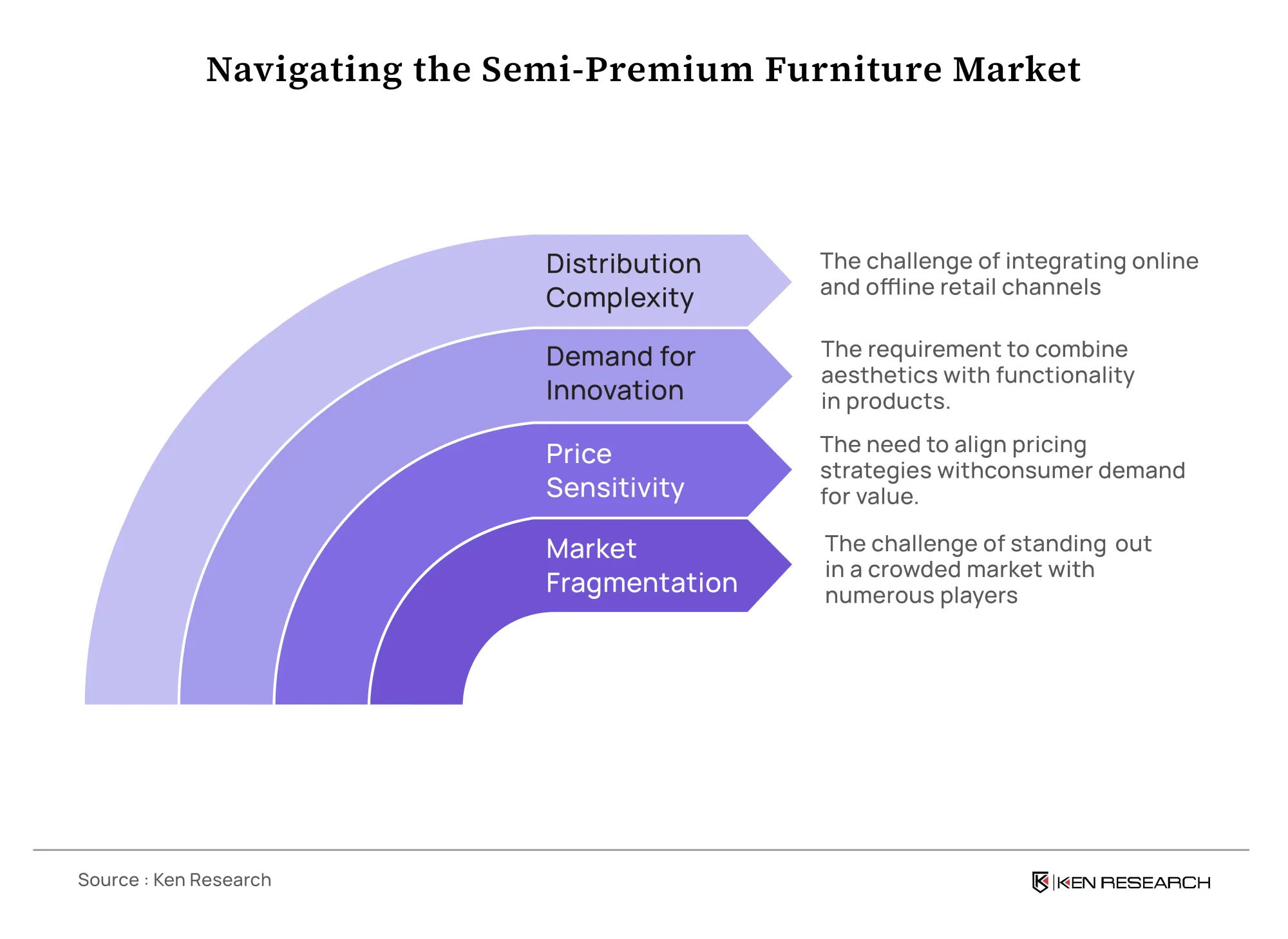How Ken Research Assisted a Leading Furniture Manufacturer Overcome Market Challenges with a Strategic Market Entry Plan?
Ken Research guided a leading furniture manufacturer with a strategic market entry plan, addressing market challenges, identifying growth opportunities, and enabling successful expansion into competitive markets with tailored insights.

Introduction and Key Highlights
A leading Indian furniture manufacturer aimed to expand its footprint in the semi-premium sofa and office seating market, targeting a price segment between INR 50,000 to INR 2 lakhs. The goal was to cater to urban professionals, corporate offices, and premium residential customers while leveraging existing manufacturing capabilities.
Ken Research developed a data-driven market entry strategy emphasizing consumer segmentation, product differentiation, pricing optimization, and distribution innovation. This approach helped the client achieve rapid penetration in a highly competitive and fragmented market.
Key Highlights:
- Market Penetration: Established a strong foothold in Tier 1 and Tier 2 cities, targeting urban households, corporate offices, and premium hospitality clients.
- Innovative Distribution: Implemented a hybrid distribution strategy, integrating online platforms with physical retail partnerships.
- Market Share Achievement: Captured 15% of the target market share within the first year of launch.
Client Overview and Challenges
The client is a well-established furniture manufacturer in India, known for its strong presence in the mid-market segment. With growing demand for semi-premium furniture, the client sought to diversify its offerings to target this lucrative market, leveraging its manufacturing capabilities and brand reputation.
Challenges and Pain Points
The semi-premium furniture market presented several challenges:

- Market Fragmentation: The sector is characterized by diverse players offering a range of designs and price points, creating difficulty in establishing differentiation.
- Price Sensitivity: Consumers, especially in Tier 2 cities, demanded value for money despite being in the semi-premium category, requiring a careful balance between pricing and perceived value.
- Demand for Innovation: Urban buyers required products that blended contemporary aesthetics with functionality, particularly in office seating solutions.
- Distribution Complexity: The client needed to cater to varied customer preferences by balancing online and offline retail channels.
Strategic Approach by Ken Research
Ken Research employed a structured, comprehensive approach to address these challenges and create a sustainable growth plan for the client.
Step 1: Market Research and Segmentation
Ken Research conducted an in-depth analysis of market trends and customer behaviors, identifying key demand drivers and segmenting the market into three categories:
- Residential: Urban households seeking stylish, comfortable sofas.
- Corporate: Offices prioritizing functional and ergonomic seating.
- Hospitality: High-end hotels and lounges demanding durable, designer seating.
Step 2: Product Selection and Differentiation
A product line was developed to meet diverse customer needs:
- Modular Sofas: Tailored for space-conscious urban dwellers.
- Ergonomic Office Chairs: Targeting corporate buyers with a focus on health and productivity.
- Customizable Designs: Offering flexibility in material, design, and fabric for residential and commercial clients.
Step 3: Pricing Strategy
To cater to diverse customer segments, Ken Research recommended a tiered pricing model:
- Tier 1 Cities: Positioned as a premium brand for consumers willing to invest in luxury.
- Tier 2 Cities: Priced competitively to ensure affordability without compromising on the semi-premium appeal.
Step 4: Hybrid Distribution Model
Ken Research devised a hybrid distribution strategy:
- Online Channels: Leveraging augmented reality (AR) tools to allow customers to visualize furniture in their spaces.
- Retail Partnerships: Establishing shop-in-shop formats to provide customers with a tactile buying experience while optimizing operational costs.
Step 5: Marketing and Brand Positioning
A multi-channel marketing strategy was implemented:
- Digital Campaigns: Targeting millennials and urban professionals through online platforms.
- In-Store Promotions: Enhancing visibility and driving footfall in retail stores.
Impact and Outcomes
Ken Research’s strategic interventions delivered transformative results for the client:
- Enhanced Brand Visibility: A blend of online and offline channels captured new customer segments while maintaining the brand's premium appeal.
- Strong Market Entry: The client achieved a 15% market share within the first year in the semi-premium segment, successfully entering Tier 1 and Tier 2 cities.
- Sustainable Profit Margins: By balancing premium pricing with cost-efficient operations, the client achieved profitability even in price-sensitive markets.
- Positive Consumer Response: Customization options and ergonomic features resonated well with target audiences, particularly corporate buyers, leading to repeat business and long-term contracts.
Client Testimonial
"Ken Research delivered a comprehensive strategy tailored to our specific needs, helping us navigate the complexities of the semi-premium market. Their insights on market segmentation, pricing, and distribution were instrumental in achieving rapid market penetration while maintaining our brand’s premium identity."
— Head of Marketing
Ken Research enabled the client to successfully enter the semi-premium furniture market by addressing key challenges such as market fragmentation, price sensitivity, and distribution complexities. The structured approach focused on segmentation, differentiation, and marketing helped the client secure a strong market position, enhance brand value, and achieve sustainable growth.


